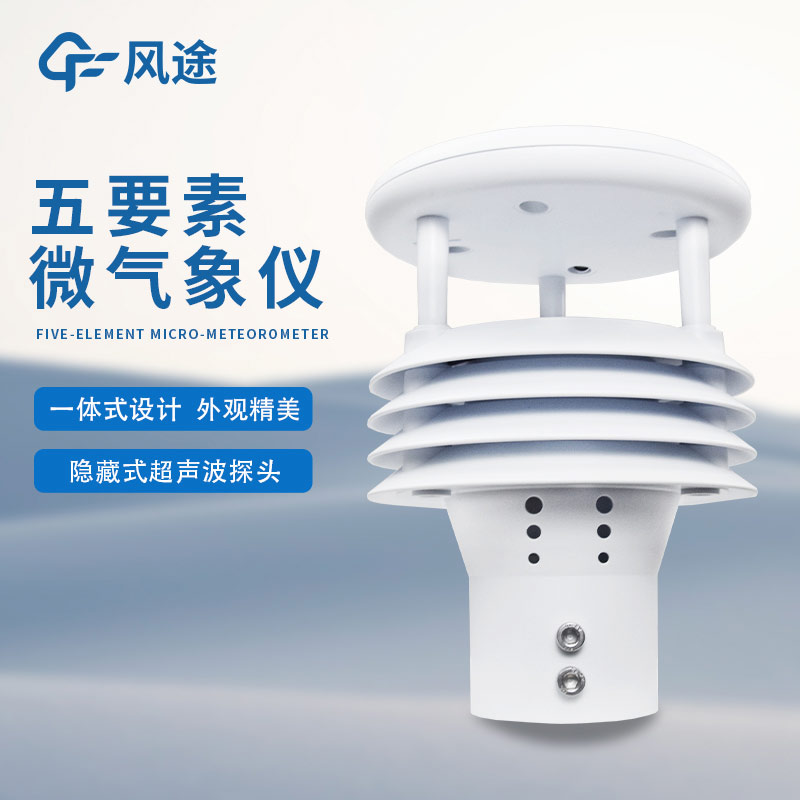Shandong Fengtu IOT Technology Co., Ltd
Sales Manager:Ms. Emily Wang
Cel,Whatsapp,Wechat:+86 15898932201
Email:info@fengtutec.com
Add:No. 155 Optoelectronic Industry Accelerator, Gaoxin District, Weifang, Shandong, China

Sales Manager:Ms. Emily Wang
Cel,Whatsapp,Wechat:+86 15898932201
Email:info@fengtutec.com
Add:No. 155 Optoelectronic Industry Accelerator, Gaoxin District, Weifang, Shandong, China
time:2024-06-04 08:39:16 source:Weather Station viewed:598 time
In ancient times, it was difficult for people to try to predict the weather conditions behind based on climate change. But it has to be said that the wisdom of our ancestors was infinite, they predicted the weather by observing the sky and by observing the behaviour of animals.
Nowadays, with the development and progress of science and technology, a lot of advanced meteorological detection instruments and technologies have been developed, like the micro meteorological instrument is a kind of instrument for observing the weather and climate, it is a kind of electronic equipment used to measure meteorological parameters, they are widely used in meteorological observation, environmental monitoring, aerospace and other fields. You can get data about temperature, humidity, wind speed, wind direction, barometric pressure, rainfall and other meteorological parameters, which can better understand the weather conditions, predict future weather changes, take good measures and so on.
A micrometeorological instrument is a device that integrates a variety of sensing technologies and is capable of monitoring a number of environmental parameters in a single unit. It can be used as a portable device to study local microclimate and record various environmental data related to specific environmental phenomena.
Traditionally, the monitoring of meteorology has long relied on discrete sensors, such as mechanical wind speed and direction sensors, which are relatively inexpensive in terms of cost. However, during operation and maintenance, these devices often encounter multiple problems, which not only increase the cost of maintenance and repair, but also may lead to inaccurate monitoring data that do not truly reflect the environmental conditions.
There are also mechanical wind speed and direction sensors which, due to the movable parts in their design, are susceptible to the limitation of the minimum start-up wind speed and are more prone to internal device damage or performance degradation in harsh outdoor environments such as high temperature, high humidity, dusty conditions, sandy winds, and strong direct sunlight, resulting in biased measurements or even equipment failures.
In view of the increasing demand for accuracy in meteorological monitoring, micrometeorological instruments based on ultrasonic wind measurement are able to overcome the limitations of mechanical sensors due to the absence of mechanical rotating parts, provide more stable and accurate monitoring, are suitable for all-weather and long-term operation, and require little maintenance.
Considering the rising cost of labour, the cost of operation and maintenance has also become an important consideration. As a result, ultrasonic micrometeorometers that combine multiple monitoring functions (including wind speed and direction) are becoming increasingly popular due to their high efficiency and low maintenance.

ph sensor definition is one of the most important tools for measuring pH and is used to measure the acidity or alkalinity of a liquid or solution, with pH representing its acidity or alkalinity....
wind direction measuring device is an instrument used to measure wind direction in greenhouse, environment, weather station, ship, dock, aquaculture and other environments....
The five element weather monitor is used to monitor the five elements of weather, namely temperature, humidity, air pressure, wind speed and wind direction. It usually consists of a number of sensors and data loggers that can monitor and record these elements in real time. The five element weather m...
What is a ducted air speed sensor?Firstly, let's understand why ducts need to measure wind speed. In many industrial and construction applications, ducts are commonly used to transport gases or liquids such as oil, gas, water, air and other chemicals. In these applications, the wind speed inside...